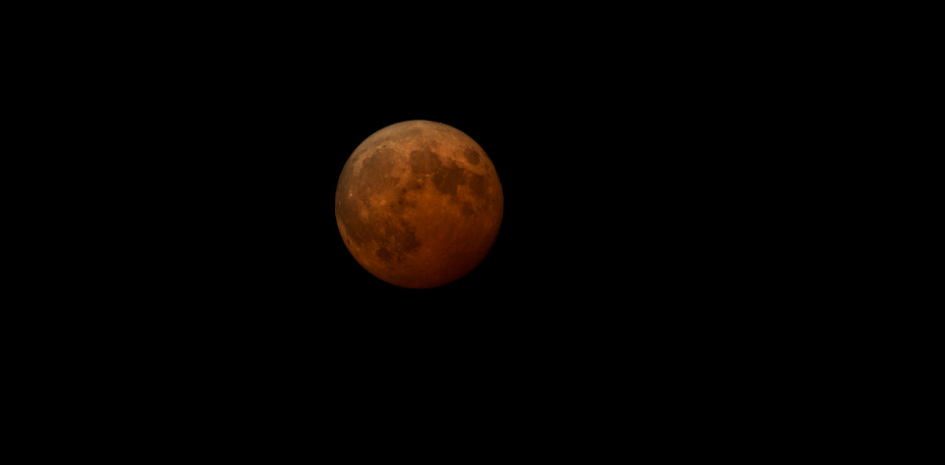Rare Blood Moon Will be Visible on March 14th

© NASA
On March 14th, prepare for a sky show you won’t forget! A rare Blood Moon will grace us with its eerie red glow! It’s the kind of lunar event that makes you want to stop everything and look up.
A seasoned stargazer or a casual skywatcher, this Blood Moon is bound to leave you in awe.
Don’t miss your chance to witness a celestial event that doesn’t come around every day!
What Is a Blood Moon?
A Blood Moon happens during a total lunar eclipse when the moon takes on a reddish color. This happens because the Earth sits between the sun and the moon, causing sunlight to pass through Earth’s atmosphere. The atmosphere scatters the shorter (blue) wavelengths of light and lets the red ones pass through, making the moon look all spooky and blood-red.

It’s a cool and rare sight, perfect for anyone looking to catch something a little out of the ordinary in the night sky!
What Is a Total Lunar Eclipse?
A total lunar eclipse happens when Earth passes directly between the sun and the moon, casting a shadow that gradually covers the moon’s surface. During totality, which will last for 65 minutes on March 13-14, sunlight passing through Earth’s atmosphere is refracted, allowing reddish light to illuminate the moon.
Phases of a Total Lunar Eclipse
- Penumbral Phase: During this phase, Earth’s outer shadow, known as the penumbra, gently obscures part of the moon’s surface. The dimming is subtle, so the moon remains mostly visible but with a soft, shadowy glow around its edges. This is the beginning of the lunar eclipse, and it can be a bit tricky to spot, as the change is very gradual.
- Partial Phase: In this phase, the moon begins to move into Earth’s central, darker shadow, or also known as the umbra. As the moon enters the umbra, a noticeable darkening starts to take place on one side, creating a sharp contrast with the rest of the moon. This phase marks the transition from the faint penumbral shadow to the deeper, more intense shadow cast by the Earth.
- Totality: Totality is the most dramatic part of the eclipse, where the moon is completely submerged in the Earth’s umbra. As it soaks in the full shadow, the moon takes on a deep reddish hue, caused by sunlight scattering through Earth’s atmosphere. During this phase, stars may become visible around the moon’s perimeter, and if the timing is right, you could even catch the Northern Lights in action if there’s a geomagnetic storm.
After about 33 minutes, the eclipse gradually reverses as the moon exits Earth’s shadow and regains its brightness.
How Rare Is a Blood Moon Sighting?
Blood Moons are pretty rare, but not super impossible to catch. They happen during a total lunar eclipse, which occurs about 2 to 4 times a year, but not every eclipse gives the moon that distinct red color. For a Blood Moon to happen, the timing has to be just right.

So, while you might see a total lunar eclipse every few years, a Blood Moon might only show up once every few decades, depending on your location and the conditions. Definitely a cool event to keep an eye out for!
Who Will Be Able to See a Blood Moon?
The total lunar eclipse on March 13-14, 2025, will be visible across North and South America, with optimal viewing in the U.S., Canada, Mexico, and South America. The eclipse will last 366 minutes, with totality, when the moon turns red, lasting about 65 minutes.
North America will witness its first total lunar eclipse since November 2022 on March 13-14, 2025. This event, known as a “blood moon” due to the moon’s reddish hue during totality, will be the only total lunar eclipse visible in the region that year.
What Can You Look Forward to?
Light pollution may obscure views of stars and the Milky Way during the eclipse, but it won’t affect the visibility of the “blood moon” itself. You don’t need to travel far from city lights, as the moon will look the same in both urban and rural areas.
Clear skies are more important than dark skies for viewing the eclipsed moon, so check the weather in advance and find a spot with less cloud cover. Since totality lasts 65 minutes, even a brief break in the clouds will be enough to catch a great view.
For close-up views of the “blood moon,” visiting an observatory or using binoculars or a telescope is recommended. Check out your local observatory or join an eclipse-watching event hosted by local astronomy clubs.
Stay On the Look Out for “Totality”
The total lunar eclipse will have several phases over about five hours, but the key moment is totality, when the moon turns red. Here are the timings for totality across North America:
- Eastern Time Zone: 2:26 a.m. to 3:32 a.m. EDT on March 14
- Central Time Zone: 1:26 a.m. to 2:32 a.m. CDT on March 14
- Mountain Time Zone: 12:26 a.m. to 1:32 a.m. MDT on March 14
- Pacific Time Zone: 11:26 p.m. to 12:32 a.m. PDT on March 13-14
- Alaska Time Zone: 10:26 p.m. to 11:32 p.m. AKDT on March 13
- Hawaii Time Zone: 8:26 p.m. to 9:32 p.m. HST on March 13
Preparing for the Rare Blood Moon
While you can enjoy the eclipse with just your eyes, a few items can make the experience even better. A comfy lawn chair, warm layers, snacks, and hot drinks are all great to have on hand. Binoculars will also enhance your view. The good news is, you won’t need eclipse glasses, since the moon only reflects sunlight, it’s completely safe for your eyes, just like looking at the moon any other night.
You might also want to read: NASA Moon Homes Are Coming Soon! Save the Date for 2040



